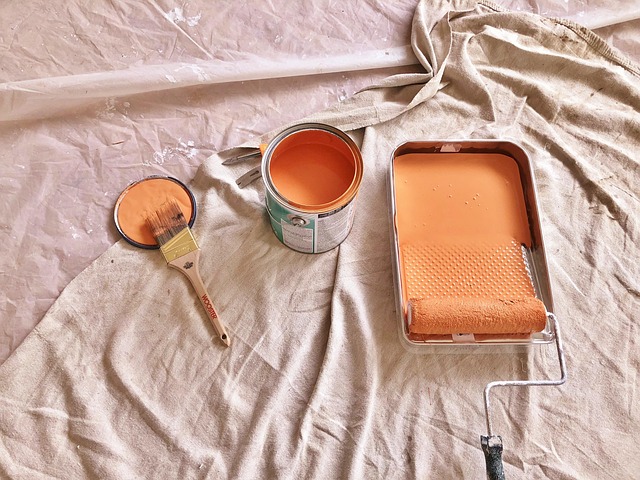Why Function Matters First
Great design isn’t just about how a space looks—it’s about how it works. Sure, clean lines and curated decor grab attention, but if the space doesn’t serve the way you live, the appeal fades fast. Function is the backbone. It shapes how you move, where you pause, how easy it is to access what you need when you need it.
Think of a kitchen where nothing’s within reach, or a living room so packed you can’t stretch your legs. Poor functionality turns even the most beautiful room into a source of friction. On the flip side, a well-designed, usable space adds rhythm to your day. It reduces stress. It saves time.
The best interiors strike a sharp balance—where beauty reinforces usability, not competes with it. A sofa that fits your space and your lifestyle will beat the trendy piece every time. A layout that makes sense is better than one that just looks good in photos. Start with purpose, then build your aesthetics around that. That’s smart design.
Start with Flow, Not Furniture
Before you think about color palettes or throw pillows, look at your space like a traffic map. How people move through a room defines how it feels. Too many tight turns or dead-ends, and everything feels cramped—even in a big space.
Creating a clean flow means prioritizing clear pathways. Keep major walkways at least 30 inches wide. Avoid squeezing furniture into corners where it blocks natural movement. If getting from the kitchen to the couch feels like navigating a maze, it’s time to rethink.
Zoning is your best friend. Break the room into areas with a purpose: a reading chair with a lamp is a rest zone. A small table and two chairs near a window? Perfect for casual meals or work sessions. Keep social spaces distinct from where you focus or recharge. Use rugs, lighting, or furniture orientation to define areas without walls.
Don’t try to force everything into one spot. Good layout respects the way you live. It’s not about filling space—it’s about making it work.
Smart Storage Without the Bulk
Storage should serve your space, not shrink it. Top designers are leaning hard into built-in solutions for their seamless look and space-saving potential. Think under-stair cabinets, wall-integrated shelving, and hidden drawers in unexpected places. Built-ins are ideal when you want something to feel like part of the architecture—neat, tailored, long-term.
But modular storage has its place too. It’s flexible, often cheaper, and great for renters or anyone who likes to move things around. Stackable bins, cube units, and rolling carts give you control, especially in tight spots like entryways or small bedrooms.
The goal isn’t just to stash things away—it’s to keep your essentials accessible without the mess. A clear container inside a deep drawer, sleek bins behind closed doors, even hooks inside closet doors can make daily life easier without crowding your space.
Don’t ignore your walls, either. Vertical storage is a massive win in small or shared spaces. Floor-to-ceiling shelving, floating ledges, hanging racks—it’s all about using space most people forget. If it’s off the floor and out of the way, you’ve just gained square footage without sacrificing function.
Furniture That Works as Hard as You Do
In tight spaces or busy homes, furniture can’t afford to be just eye candy—it has to earn its place. Multi-use pieces like sleeper sofas, drop-leaf tables, nesting stools, and ottomans with hidden storage solve multiple problems without bloating the room. Versatility matters more than ever when square footage is tight and routines shift from day to night.
Designers aren’t pushing collections anymore. The trend leans toward customization—buy what fits your life, not just what’s trending on social feeds. A well-sized desk that doubles as a makeup vanity? Go for it. Floating shelves that act as a room divider? Smart. Functional furniture doesn’t mean boring; it means relevant.
As for budget, the rule is simple: Splurge on items you use every day—your work chair, your bed frame, your main sofa. Cut back on the stuff that’s short-term or decorative. That trendy end table that holds your drink twice a week? Save. The dining table that hosts meals, meetings, and projects? Invest.
In the end, good pieces work harder than you do. That’s the whole point.
Lighting That Lifts the Room
Good lighting isn’t just about brightness—it’s about layering. There are three types that matter: ambient, task, and accent. Ambient lighting is your base layer—what fills the room. Think overhead lights or large lamps that let you navigate without bumping into furniture. Task lighting is more focused and purposeful: kitchen under-cabinet strips, a reading lamp by the bed, or a bright spotlight over a workspace. Finally, accent lighting brings the mood. Wall sconces, LED strips, or art lighting turn a space from functional to inviting without much effort.
Natural light matters too, especially when you don’t have much of it. Use mirrors across from windows to bounce sunlight deeper into the room. Sheer curtains give privacy but still let light pour in. If your space is boxed in, consider reflective finishes and dual-purpose furniture placement to avoid blocking windows—you need all the light you can get.
And don’t overlook your switches. If your lighting plan is layered, your controls should be too. Dimmers in the bedroom, separate switches for overheads and lamps in shared spaces, motion sensors in closets—it’s about matching your lighting behavior to your actual routine. No one needs to fumble for five different remotes just to watch a movie at night.
Style That Serves a Purpose
Design isn’t just about what looks good—it’s about what works for you. Functional style means every piece in your space contributes to how you feel and how you live.
Functional Decor That Directs and Defines
Smartly chosen decor elements can subtly guide movement and visually organize space without adding clutter.
- Rugs: Use them to create visual pathways and define zones within open layouts (e.g., separating a lounge area from a dining nook).
- Mirrors: Strategically placed mirrors reflect light and open up tight spaces—perfect for small rooms or darker corners.
- Shelving and art placement: Mount items at eye level to direct visual flow and avoid crowding surfaces.
Practical Materials for Real Life
High-maintenance surfaces may look good on day one, but they rarely stand up to the wear and tear of daily life. Choose materials that match your lifestyle—whether you have kids, pets, or a fast-paced routine.
- Flooring: Opt for scratch-resistant wood or luxury vinyl planks instead of high-gloss finishes.
- Upholstery: Performance fabrics with stain resistance are ideal for everyday messes.
- Surfaces: Quartz countertops offer durability without sacrificing beauty—unlike softer, porous stones.
Keep longevity and ease of care top of mind. Function doesn’t mean sacrificing form; it just means designing smarter.
The Psychology of Color
Color isn’t just cosmetic—it profoundly impacts how a space feels and how people behave in it.
- Warm tones (like soft terracotta or golden beige) feel welcoming and cozy—great for social spaces.
- Cool tones (like blues and greens) have a calming effect, ideal for bedrooms or work areas.
- Neutral palettes help maintain flexibility—easily refreshed with changing accessories or seasonal decor.
Use color to reinforce the purpose of each room, whether to focus, energize, or relax.
Design that works starts with function—and great style follows.
Mistakes to Avoid
Designing a space with imaginary guests in mind is one of the oldest mistakes in the book. That fancy bar cart you never use? The stiff armchairs no one sits in? The dining room you walk past 330 days a year? It’s an easy trap—designing for how you want your home to look to others, not how you actually live in it. You end up with rooms that photograph well but feel wrong the second you stop pretending.
Another misstep: stuffing a room to the brim with “must-haves” and forgetting that space itself is functional. Cramming in oversized furniture, accent chairs, and trend-hugging pieces leaves you with nowhere to move and nothing that breathes. Corners go dark and dead, while the middle of the room becomes a no-go zone.
And then there’s the trend trap. Curved couches, sculptural chandeliers, wall-to-wall beige—if these don’t serve you in your daily rhythm, they’re just styled clutter. Good design fits your life, not just your Pinterest board. So, before you buy that ‘it’ piece, ask yourself: will this make my life easier—or just temporarily cooler?
Expert Advice from Top Designers
Homes change because lives change. The best designers don’t fight that—they build for it. Whether it’s a new baby, a remote job, or a hobby that takes over the guest room, a good space can flex without needing a full renovation. That means furniture that moves easily, layouts that can rearrange without a headache, and zones that can morph over time. Open shelving one year can turn into closed storage the next. A reading nook today, a play corner tomorrow.
What keeps a home functional long-term isn’t just smart design—it’s habits. Designers talk about the small stuff: a 15-minute reset at the end of the day, rotating out decor seasonally, occasionally editing what no longer fits. Function isn’t static. Even a great room gets stale without a little attention.
As for doing it yourself? Measure twice, DIY once. Swapping drawer pulls, adding shelf lighting, or rearranging furniture—those are strong DIY moves. But structural changes, custom cabinetry, or electrical work? Bring in a pro. They’ll see around corners you don’t even know exist.
Living in a responsive home doesn’t mean chasing perfection. It means setting it up so your space can keep up with you.
Ready to Redesign?
Start simple: know what you actually need before you chase aesthetics. A space that photographs well doesn’t always live well. Are you working from home? Cooking big meals? Hosting often? Your space should answer those questions before you start browsing for furniture or picking paint colors.
Next, think in layers. A good space has structure (your basic layout and flow), storage (what you need accessible and what you need hidden), and then style (your visual signature). Tackle them in that order—don’t build style on top of chaos.
Finally, accept that no functional space is ever truly done. Needs shift, habits change, and the best-designed rooms adjust along with them. Whether it’s swapping furniture, rethinking storage, or just changing how you use a room, smart spaces are built to evolve.
(Explore more design strategies at HouseZoneSpot)


 Billake Bartow is a passionate tech writer at HouseZoneSpot, known for his deep understanding of smart home innovations and digital living. His articles focus on practical technology that enhances everyday comfort, convenience, and energy efficiency in modern homes.
Billake Bartow is a passionate tech writer at HouseZoneSpot, known for his deep understanding of smart home innovations and digital living. His articles focus on practical technology that enhances everyday comfort, convenience, and energy efficiency in modern homes.

